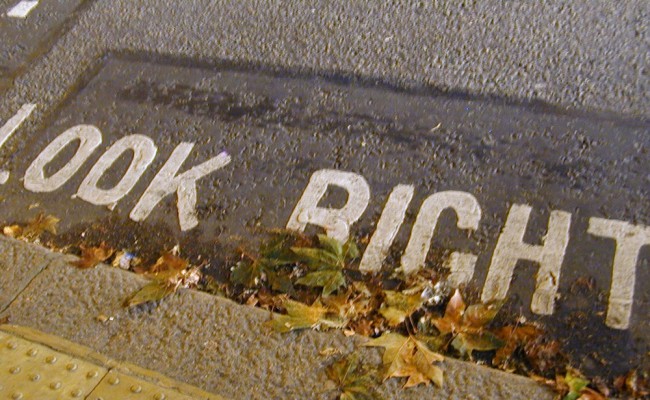Since Gillard’s political demise, I’ve been left speechless as many of my friends have said things like, ‘the government should have spent more on advertising’, ‘the government passed over five hundred pieces of legislation’ (as if somehow it’s quantity rather than quality that counts) and ‘Australia has low unemployment’. Before last week, I never knew the Left could be so glib and hypocritical. Many have too readily accepted Gillard’s portrayal of her unpopularity as purely a matter of misogyny.
Gillard’s biggest achievements were in education, the NDIS and her Fair Work Act. But she boasts a much longer list of policy failings.
More importantly: Gillard undoubtedly shifted the ALP to the Right.
In a liberal feminist outrage piece, Anne Summers says that, with Gillard’s fall, ‘bullying and treachery are clearly the new normal’. But we should also note that, before she was toppled, Gillard helped normalise social conservatism and neoliberalism.
I’ve put together a quick summary of Gillard’s approach on some key issues.
Inequality
For all their noise and bluster about greedy billionaires, inequality continued to escalate under Gillard and Swan. Poverty has been increasing slowly over the past ten years but from 2011–12, there was a 15 percent rise in the number of Australians who had over one million dollars in investable assets, the largest increase in the OECD. Between May 2010 and May 2012, ABS figures show the top 10 percent of salary/wage earners increased their incomes by 14 percent, the bottom 25 percent by 5.2 percent, and the bottom 10 percent by just 3.2 precent.
Then, of course, there was the mining tax. To stop the industry from hurting her popularity with advertisements, Gillard agreed to a significant reduction in the levy on mining company profits, which resulted in the loss of at least $1.5 billion in government revenue a year.
Housing
So what if there is rising inequality, as long as everyone is getting richer, right? Well, of course, one particular area where the problem’s obvious is housing (since rent and house prices are not included in the CPI). Indeed, housing costs and homelessness continued to rise under Gillard. Unlike Rudd, Gillard made no clear commitment to reducing the number of homeless. Many programs introduced under the Rudd government lapsed under Gillard’s watch – including the National Rental Affordability Scheme and funding to approve new social housing.
Labor values
I searched and I searched, and I couldn’t find much on Gillard talking about ALP values (‘moving forward’?) beyond vague, fruitless stabs at the middle: there have been ‘jobs and growth’ (as unemployment swells) and ‘welfare not work’ (as unemployment swells). All of this, Gillard later said, could only be achieved with ‘new structural savings that will maintain the sustainability of the budget and make room for key Labor priorities’. (Then, of course, the government delivered a budget blow-out). Inspired yet?
Welfare
Gillard famously refused to increase the dole. She cut the benefits of single parents and restored work-for-the dole. While Gillard did implement the NDIS, two years earlier her government had made it significantly harder for people to qualify for the Disability Support Pension. Under Gillard, the ALP also extended welfare-income management to five sites around Australia.
Indigenous rights
Gillard made a nice speech about Indigenous rights earlier this year and moved to recognise Indigenous Australians in the constitution. But the ‘Closing the Gap’ report (based on the program by the same name introduced by the Howard government) shows the government has failed in most of its objectives. Both Rudd and Gillard have been enthusiastic supporters of the NT Intervention (the National Emergency Response), which so far appears to have produced mixed results (at best).
Unemployment
Unemployment is still more than 150,000 people higher than pre-GFC levels, while levels of personal wealth have been restored. Pretty much all the jobs that the ALP has created have been in the public service. While Gillard did craft the Fair Work Act, the most critical element of ‘workplace flexibility’ – casualisation – has remained unfettered. Once you count part-time and casual workers, and those not receiving Newstart, the number of unemployed is probably close 12 percent. That’s nearly 1.5 million people, many of whom no doubt stopped supporting Gillard long ago.
GLBIT rights
Obviously Gillard inexplicably opposed gay marriage. But she also made no positive statements about the plight of gay people, particularly those still in high schools, where they suffer endlessly from bullying. Those facts make her speech on misogyny look entirely self-serving.
Asylum seekers
Gillard boosted humanitarian numbers. But she also revived off-shore processing (including a monumental backflip on Nauru), used the Australian foreign aid budget to fund detention, and attempted to introduce the ‘Malaysian Solution’ – even though in Malaysia, hitting asylum seekers with canes is in enshrined in law. When first elected, Gillard made a point of declaring that people should ‘feel free to say what they feel’ about asylum seekers.
Environment
It seems like a lifetime ago but it was only in February that the Greens formally ended their coalition with the ALP, after the government refused to list Tasmania’s Tarkine wilderness on the National Heritage register.
People are oppressed in this world on all sorts of grounds – and for the most part, Gillard was on the wrong side of that oppression. I’m not sure how many working-class women will be dismayed about Gillard being shafted from power in similar fashion to the way she shafted Rudd, particularly knowing she will leave office with a $200,000 pension and a private driver for life.
Sexism meant Gillard was more unpopular than she deserved. But her fundamental problem was not bad PR – it was her lack of imagination, vision and bravery. It’s wrong to merely focus on her poor polling. She also pushed the ALP to the Right.






